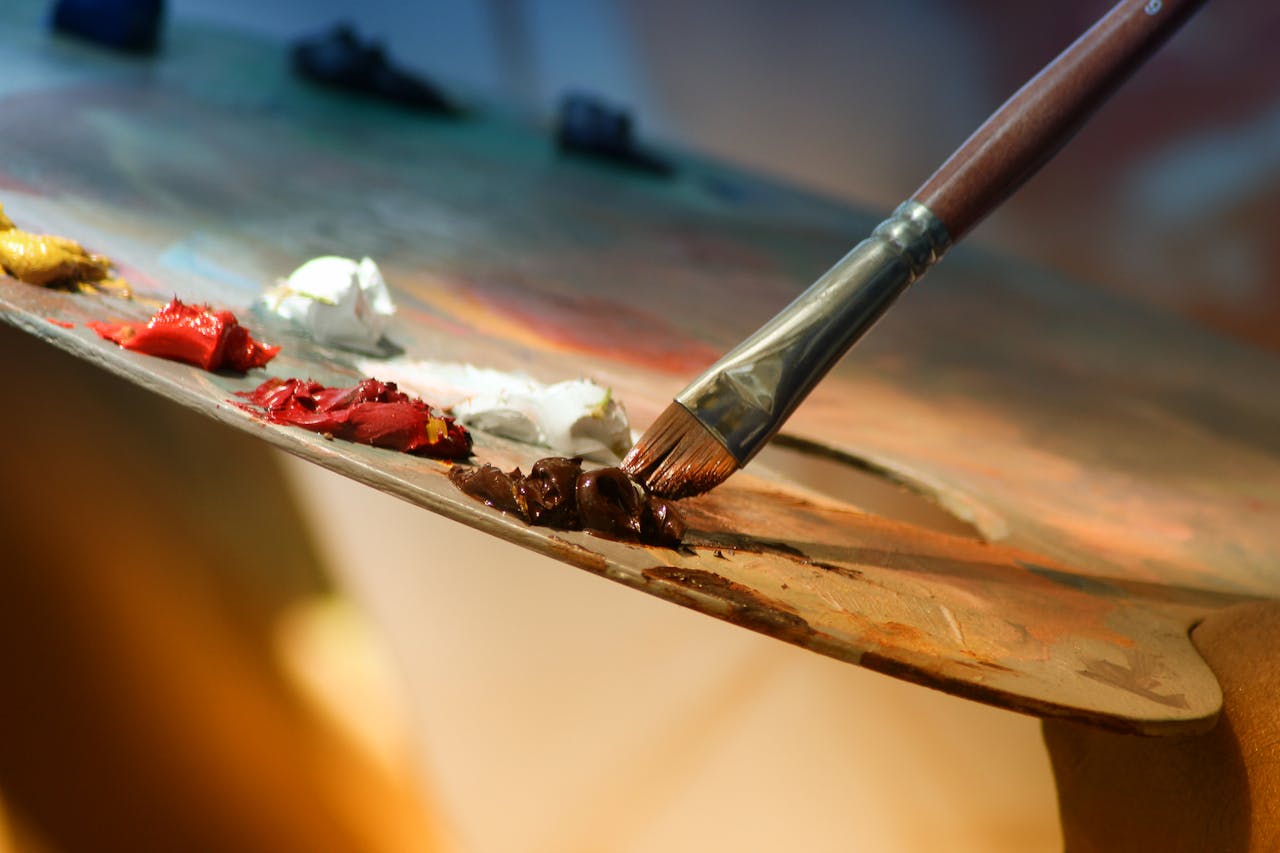Urban life has always been a rich source of inspiration for artists, capturing the vibrancy, complexity, and diversity of city living. In modern British art, urban themes offer an incredible array of subjects, from bustling streets and architectural wonders to everyday interactions and hidden alleyways. These scenes come together to provide a tapestry of experiences that reflect contemporary society.
One fascinating aspect of urban life in art is how it mirrors the changing times. As cities evolve, so do the themes explored by artists. The industrial revolution, technological advancements, social movements, and cultural shifts are all reflected in the art of their time. This constant evolution ensures that urban-themed art remains relevant and engaging for viewers, providing fresh perspectives on familiar settings.
Modern British artists bring their unique styles and interpretations to urban subjects, creating a diverse and dynamic body of work. The sounds, lights, movements, and textures of city life are captured through a variety of techniques, making each piece a unique narrative. For us, it’s a window into the heart of urban experiences, showing us not just the physical environment but the soul of city living.
By delving into the realm of urban life, we gain insights into how artists perceive and portray the world around them. It’s an exciting journey that reveals the beauty, chaos, and everything in between that defines our urban landscapes. Join me as we explore how modern British art captures the essence of urban life through evolving themes, creative techniques, and the works of notable artists.
The Evolution of Urban Themes in Modern British Art
Urban themes in modern British art have evolved significantly over the years, reflecting the changing nature of cities and the experiences within them. In the early 20th century, artists often focused on the industrialisation and mechanisation of cities. The harsh, gritty realities of factory life, crowded living conditions, and the stark contrast between wealth and poverty were prevalent subjects. Artists like L.S. Lowry captured the essence of working-class life with his iconic depictions of industrial landscapes and bustling crowds.
As time progressed, urban themes began to incorporate more diverse and dynamic aspects of city life. Post-World War II, there was a shift towards a more optimistic and vibrant portrayal of urban settings. The swinging sixties brought a burst of colour, music, and cultural revolution that was vividly captured in the art of the time. Artists started to explore themes of freedom, individuality, and social change, reflecting the new-found energy and diversity of urban centres.
In contemporary British art, urban themes continue to evolve, now often focusing on multiculturalism, technology, and social issues. Today’s urban art reflects a tapestry of experiences, from the digital age to environmental concerns, making it a mirror of modern society’s complexities. This evolution showcases how urban life remains a rich and ever-changing source of inspiration, allowing artists to document and critique the times in which they live.
Techniques and Styles Depicting Urban Life
Depicting urban life in art requires a range of techniques and styles that capture the essence of the bustling city environment. One of the most prominent techniques is the use of mixed media. By combining materials like newspaper clippings, photographs, and found objects, artists can create layered, textured pieces that reflect the chaotic and multifaceted nature of urban life. This approach allows for a more immersive and tactile viewer experience.
Street art and graffiti have also become significant mediums for expressing urban themes. Artists use spray paint, stencils, and murals to transform public spaces into expressive canvases. This art form not only captures the vibrancy and raw energy of the city but also engages directly with the community, often addressing social and political issues. The immediacy and accessibility of street art make it a powerful tool for conveying urban narratives.
Digital art has emerged as another important style for depicting urban life. With advancements in technology, artists can use digital tools to create dynamic and interactive pieces that reflect the modern digital landscape. These artworks might incorporate elements like augmented reality, video installations, or digitally manipulated images to explore themes of connectivity, surveillance, and the virtual cityscape. Digital art provides a contemporary lens through which the rapid changes of urban environments can be explored and understood.
By utilising these diverse techniques and styles, modern British artists are able to vividly portray the complexities of urban life. Whether through mixed media, street art, or digital creations, each approach offers a unique perspective on the city, making urban-themed art a rich and varied field.
Notable Artists and Their Urban-Inspired Works
Several modern British artists have made significant contributions to urban-themed art, each bringing their unique vision and style. One such artist is Banksy, whose provocative street art has garnered global attention. Known for his stencilled pieces, Banksy’s work often features satirical and thought-provoking commentary on societal issues. His murals, which appear overnight on buildings and streets, critique everything from consumerism to political oppression.
David Hepher is another notable artist whose work is deeply rooted in urban themes. Hepher’s paintings often focus on the architectural aspects of urban life, depicting high-rise buildings and council estates with a blend of realism and abstraction. His detailed exploration of the textures and forms of urban spaces highlights the sometimes harsh, yet fascinating, beauty of cityscapes.
Additionally, Tracey Emin’s work often draws inspiration from her experiences in the urban environment. While she is widely recognised for her autobiographical and confessional art, parts of her work reflect the chaos and emotional landscape of city living. Through her expressive use of text, neon lights, and installations, Emin captures the raw emotions tied to urban existence.
These artists, among others, contribute to the rich and varied landscape of modern British urban art, each offering unique insights and perspectives that deepen our understanding of city life.
The Significance of Urban Life in Shaping Contemporary Art
Urban life plays a crucial role in shaping contemporary art, offering plentiful material for artists to explore and reinterpret. The constant movement, diverse population, and ever-changing nature of cities provide a dynamic backdrop for artistic expression. This environment pushes artists to innovate and adapt, reflecting the transient and multifaceted essence of urban existence.
One significant impact of urban life on contemporary art is the way it fosters a sense of immediacy and relevance. Artists living and working in urban environments often create pieces that respond directly to current events, societal changes, and cultural trends. This responsiveness ensures that art remains a vital part of public dialogue, addressing issues that resonate with a wide audience.
Moreover, urban life encourages cross-cultural exchange and collaboration, enhancing the diversity of contemporary art. Cities are melting pots of different cultures, ideas, and traditions, and this diversity is mirrored in the artwork produced. Artists draw inspiration from the rich tapestry of urban life, incorporating elements from various cultures and fostering a spirit of inclusivity and innovation.
The influence of urban life on contemporary art highlights the importance of cities as centres of creativity and cultural production. By capturing the essence of urban experiences, artists help to document and shape our understanding of the modern world.
Conclusion
Urban life serves as an endlessly fascinating and complex subject for modern British artists. The evolving themes, innovative techniques, and diverse interpretations all contribute to a rich artistic expression field that mirrors cities’ ever-changing nature. From the industrial landscapes captured by early 20th-century artists to the vibrant, multicultural depictions of today, urban-themed art provides a window into the heart of contemporary society.
By exploring urban life in art, we gain a deeper appreciation for the unique experiences and challenges that define city living. The works of artists like Banksy, David Hepher, and Tracey Emin invite us to engage with the urban environment in new and thought-provoking ways, reflecting the beauty, chaos, and diversity that characterise our cities.
At White Court Art, we celebrate the creativity and vision of modern British artists who bring urban themes to life. Their works not only capture the essence of urban living but also encourage us to see our own surroundings through fresh eyes. To explore and appreciate these captivating artworks, visit White Court Art today and discover the vibrant world of modern British urban art.


